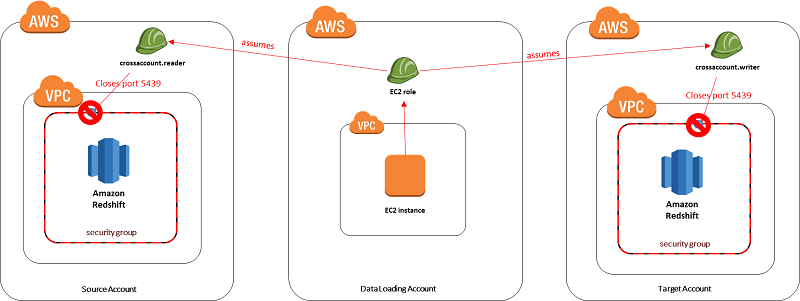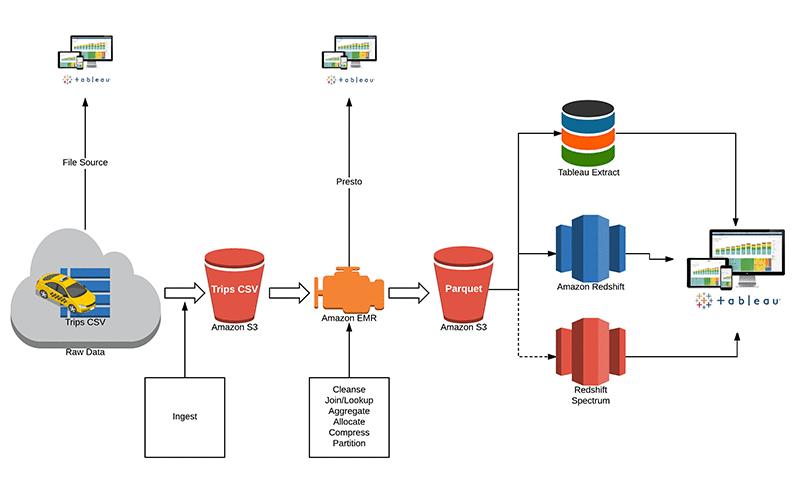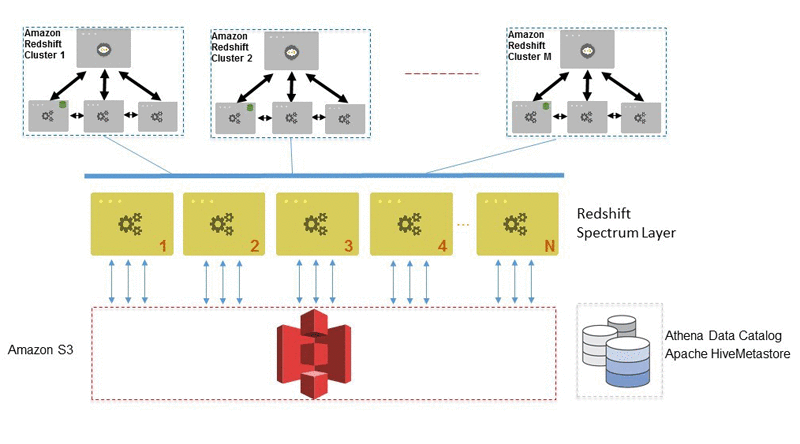AWS Big Data Blog
Category: Amazon Redshift
Combine Transactional and Analytical Data Using Amazon Aurora and Amazon Redshift
A few months ago, we published a blog post about capturing data changes in an Amazon Aurora database and sending it to Amazon Athena and Amazon QuickSight for fast analysis and visualization. In this post, I want to demonstrate how easy it can be to take the data in Aurora and combine it with data in Amazon Redshift using Amazon Redshift Spectrum.
Collect Data Statistics Up to 5x Faster by Analyzing Only Predicate Columns with Amazon Redshift
After loading new data into an Amazon Redshift cluster, statistics need to be re-computed to guarantee performant query plans. By learning which column statistics are actually being used by the customer’s workload and collecting statistics only on those columns, Amazon Redshift is able to significantly reduce the amount of time needed for table maintenance during data loading workflows.
Using Amazon Redshift Spectrum, Amazon Athena, and AWS Glue with Node.js in Production
This is a guest post by Rafi Ton, founder and CEO of NUVIAD. The ability to provide fresh, up-to-the-minute data to our customers and partners was always a main goal with our platform. We saw other solutions provide data that was a few hours old, but this was not good enough for us. We insisted on providing the freshest data possible. For us, that meant loading Amazon Redshift in frequent micro batches and allowing our customers to query Amazon Redshift directly to get results in near real time. The benefits were immediately evident. Our customers could see how their campaigns performed faster than with other solutions, and react sooner to the ever-changing media supply pricing and availability. They were very happy.
Create an Amazon Redshift Data Warehouse That Can Be Securely Accessed Across Accounts
Data security is paramount in many industries. Organizations that shift their IT infrastructure to the cloud must ensure that their data is protected and that the attack surface is minimized. This post focuses on a method of securely loading a subset of data from one Amazon Redshift cluster to another Amazon Redshift cluster that is located in a different AWS account.
Tableau 10.4 Supports Amazon Redshift Spectrum with External Amazon S3 Tables
We’re excited to announce today an update to our Amazon Redshift connector with support for Amazon Redshift Spectrum to analyze data in external Amazon S3 tables. With this update, you can quickly and directly connect Tableau to data in Amazon Redshift and analyze it in conjunction with data in Amazon S3—all with drag-and-drop ease.
Federate Database User Authentication Easily with IAM and Amazon Redshift
Managing database users though federation allows you to manage authentication and authorization procedures centrally. Amazon Redshift now supports database authentication with IAM, enabling user authentication though enterprise federation. In this post, I demonstrate how you can extend the federation to enable single sign-on (SSO) to the Amazon Redshift data warehouse.
Amazon Redshift Dense Compute (DC2) Nodes Deliver Twice the Performance as DC1 at the Same Price
Today, we are making our Dense Compute (DC) family faster and more cost-effective with new second-generation Dense Compute (DC2) nodes at the same price as our previous generation DC1. DC2 is designed for demanding data warehousing workloads that require low latency and high throughput. DC2 features powerful Intel E5-2686 v4 (Broadwell) CPUs, fast DDR4 memory, and NVMe-based solid state disks.
Building a Real World Evidence Platform on AWS
Deriving insights from large datasets is central to nearly every industry, and life sciences is no exception. To combat the rising cost of bringing drugs to market, pharmaceutical companies are looking for ways to optimize their drug development processes. They are turning to big data analytics to better quantify the effect that their drug compounds […]
Amazon Redshift Spectrum Extends Data Warehousing Out to Exabytes—No Loading Required
When we first looked into the possibility of building a cloud-based data warehouse many years ago, we were struck by the fact that our customers were storing ever-increasing amounts of data, and yet only a small fraction of that data ever made it into a data warehouse or Hadoop system for analysis. We saw that […]
Best Practices for Amazon Redshift Spectrum
November 2022: This post was reviewed and updated for accuracy. Amazon Redshift Spectrum enables you to run Amazon Redshift SQL queries on data that is stored in Amazon Simple Storage Service (Amazon S3). With Amazon Redshift Spectrum, you can extend the analytic power of Amazon Redshift beyond the data that is stored natively in Amazon […]









